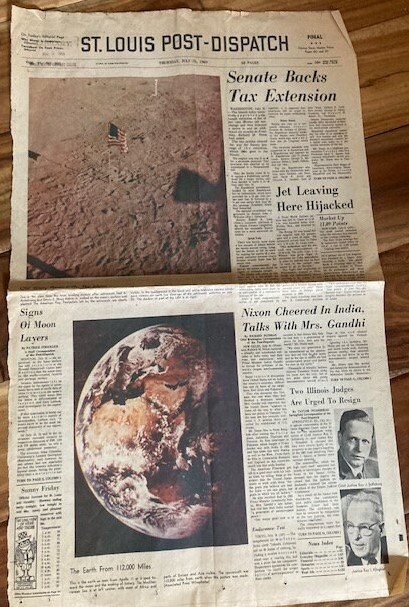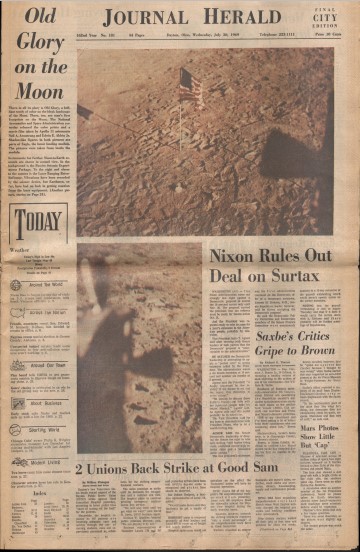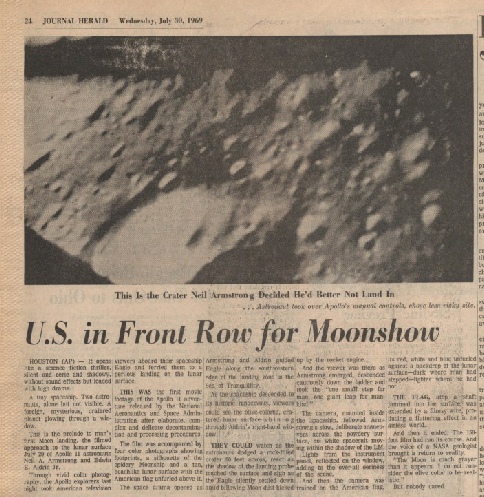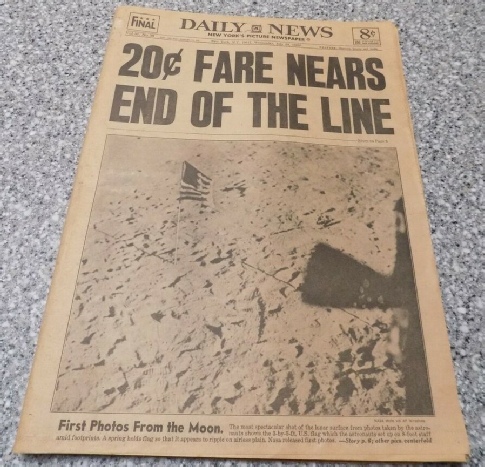5.4: This is the modern world
As well as seeming to think that Photoshop was invented before there were computers to run it on, you’ll also get people frothing at the mouth at the digital versions of the images online, making wild accusations that they have all been touched up, and that this must be how satellite imagery has been added. They’ll even point at spots and scratches on these versions as evidence of something important or other.
Leaving aside the fact that these people have clearly never scanned a photograph and the blemishes on the photographs are from the paper copy and from dust on the scanner glass, they also have to explain the large numbers of photographs in existence that are not digital, lots of which I actually now own in the form of contemporary slides, newspapers and magazines.
One example of this is the collections of slides available for purchase showing mission photographs. A quick trawl of auction and memorabilia sites reveals several collections of Apollo related slides available for purchase. For the benefit of younger readers, slides are ‘positives’ of the photographic film. When a light is shone through them they can be projected on to a screen for presentations. It’s what people used before Powerpoint was invented. You can still buy slide projectors for them.
Figure 5.4.1 shows several examples of the collections for sale. As they are all from auction sites there is no real point giving links to them. Google ‘Apollo slides’ -
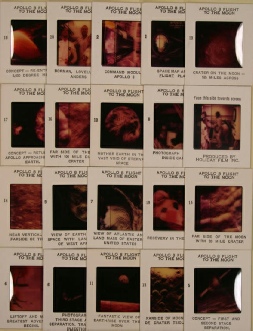
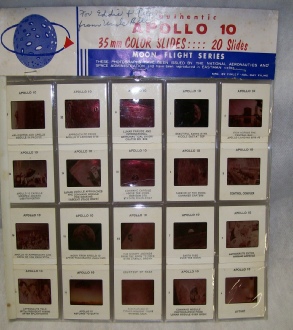
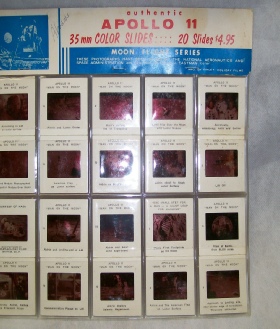
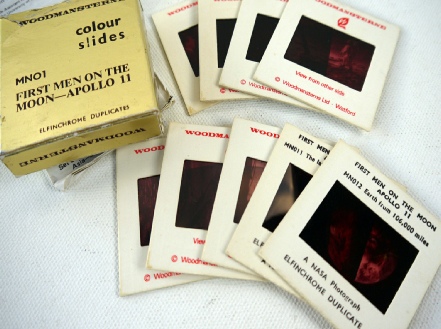
Figure 5.4.1 Collections of slides from Apollo 8 (left), Apollo 10 (centre left) and Apollo 11 (right). Various eBay sources.
Each one of those collections has at least one photograph of Earth featured, and some of these can be seen below in figure 5.4.2.
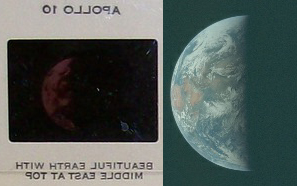
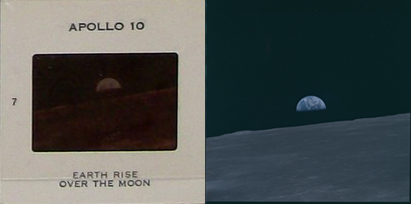
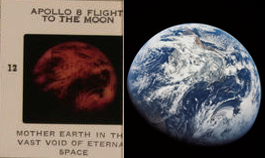
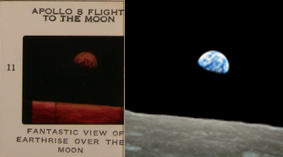
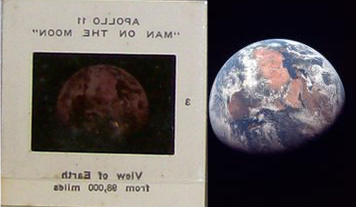
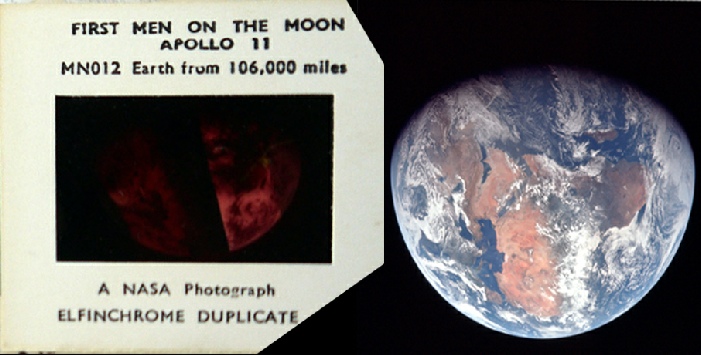
Figure 5.4.2 Selected Apollo slides from figure 5.4.1
It’s pretty self-
Well, the point here is that the original slides can not have been altered, neither can the newspaper and magazine photographs. The digital copies are therefore faithful reproductions of originals and not digitally manipulated copies of material only held by NASA in some darkened vault with double key access.
Just in case anyone is now entertaining the idea that those eBay ads are fakes, I’ve also spent my own hard earned money on some of these slides, and newspapers and other original media items, so let’s have a look at actual real life examples of Apollo images from my own slides projected on to my wall (figure 5.4.3).
These slides were issued by the UK newspaper the Daily Express, who sold a lot of Apollo memorabilia (including 8mm films that I also own), but I have others, including a set issued by Zeiss, who supplied lenses to NASA (figure 5.4.4).
There will, of course, be conspiracy fans who just stop at the words ‘so what?’, and argue that obviously NASA just released doctored images into the wild that were blindly reproduced by everyone else (who may or may not have been in on the deal).
Did they have time to doctor the images? The invisible and never tracked down airbrushers or image compositors that are alleged to have been involved in all this mass doctoring of photographs would have had to work overtime to get these images out.
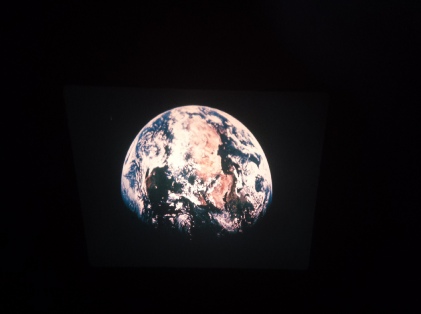
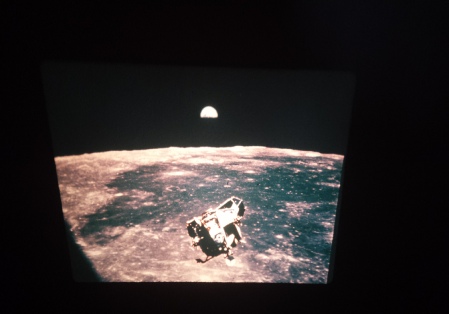
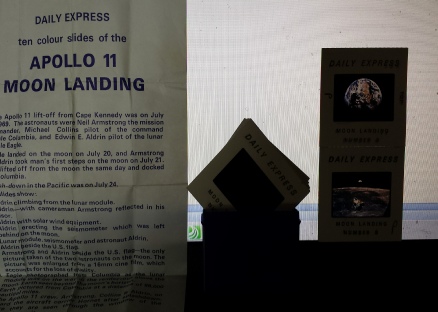
Figure 5.4.3: Slides from the Daily Express box set of Apollo 11 images (shown against my laptop on the right)
Figure 5.4.4: Souvenir slides issued by Ziess, backlit by my laptop.
This document, for example, describes the time scale for developing and then releasing images from Apollo 11. The photographs would be developed in two batches as soon as they were released from the decontamination process in the Lunar Receiving Laboratory. Public release was intended for just 1 week after being collected from the photographers, and the majority of that time was to be spent in decontamination. The first record I’ve found of Apollo 11 images in print comes from here and here, where they appeared in the UK on July 30th. This excellent book suggests that a few photographs and sequences of 16mm film were released to the press on the 27th, the full release was on the 29th. Figure 5.4.5 shows some sample pages from North American newspapers from July 30th.
Other missions went through similar processes. The Apollo 8 photograph below (figure 5.4.6 left) is shown in a newspaper dated 31/12/68. This obviously means that it had to have been in the hands of the newspaper on the 30th, and freely available ever since. We also have another one from Apollo 8 from my own collection in a souvenir supplement of the Evening Post (published in Reading) dated January 6th 1969 (figure 5.4.7, right), which the sharp-
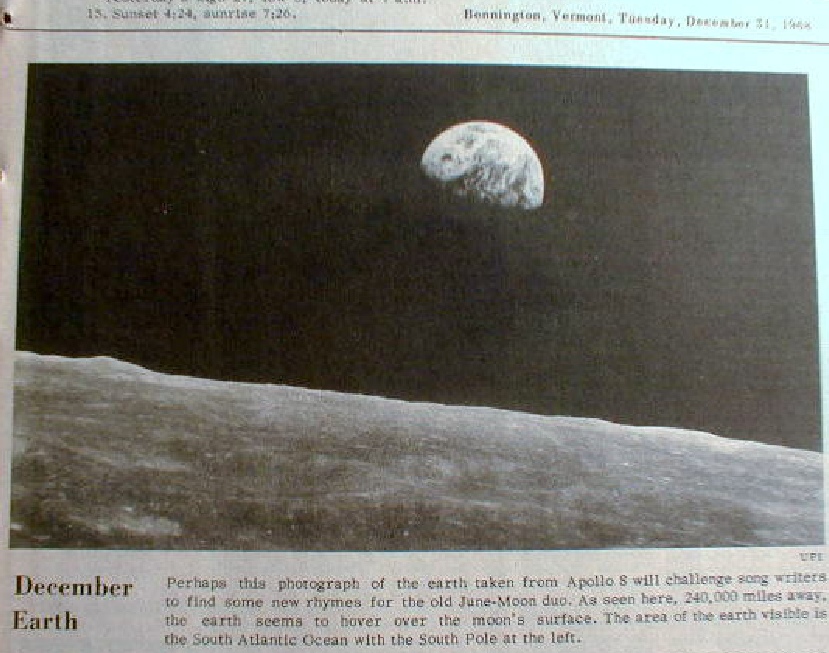
One interesting thing about the image on the right is that it may have been associated with the first use of the term ‘Blue Marble’, as used in the 1969 album ‘Blue Marble’ by Sagittarius (figure 5.4.8).
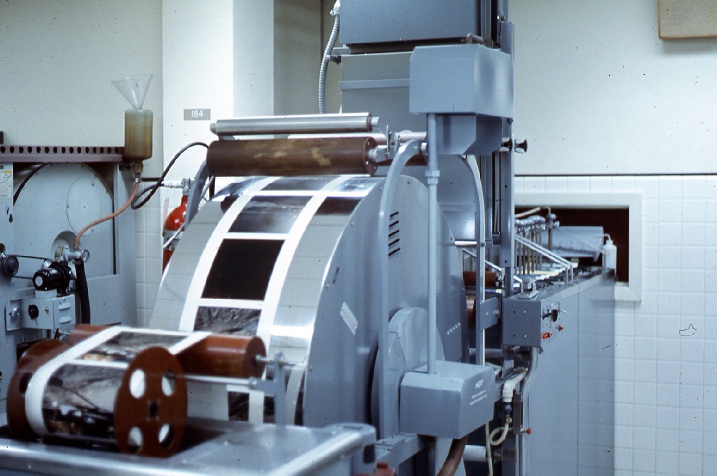
The cover and text on the reverse, as well as the lyrics of the title track all obviously reference the image, and as it was published 3 years before Apollo 17 it clearly has first dibs on claiming credit for the term.
Folky prog seemed to like the image, as it was again used in the 1977 Eponymous album by the group ‘Of the Earth’ (figure 5.4.79).
The images were in the hands of the media even before this date, as shown by the date shown on a wire image version of AS11-
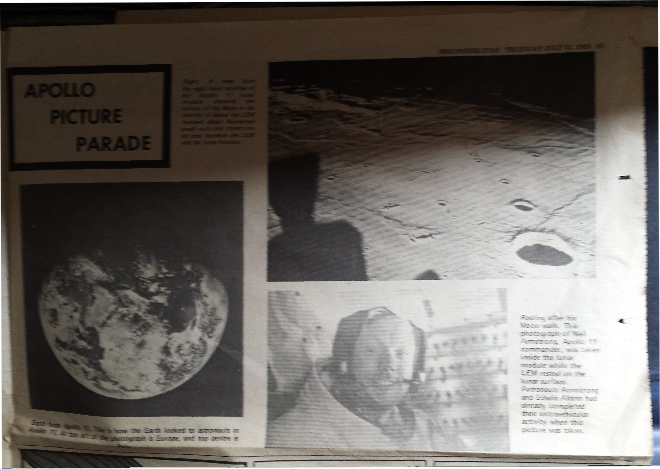
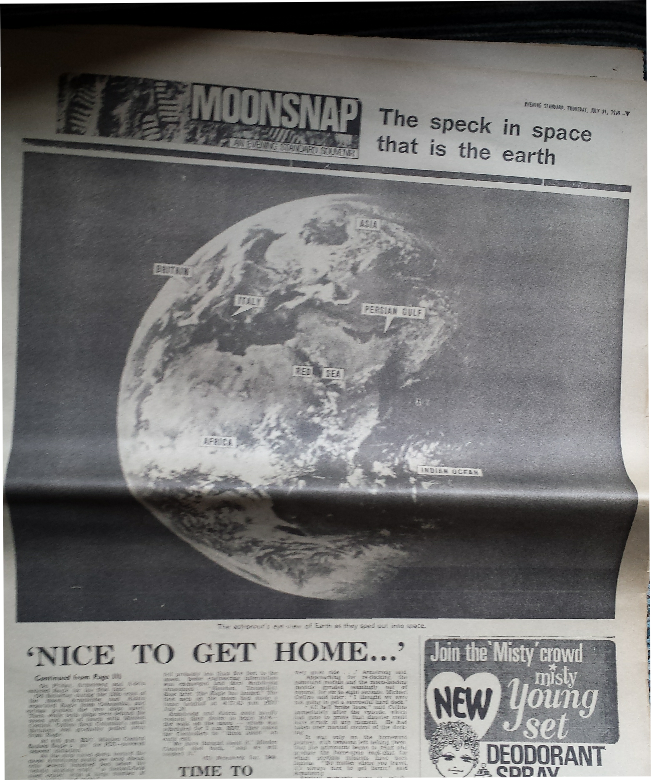
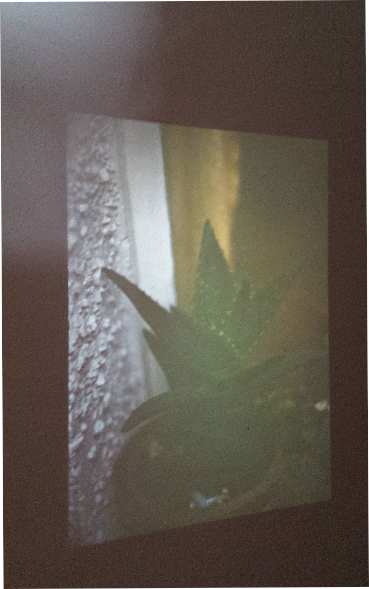
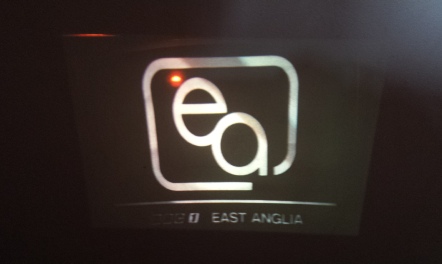
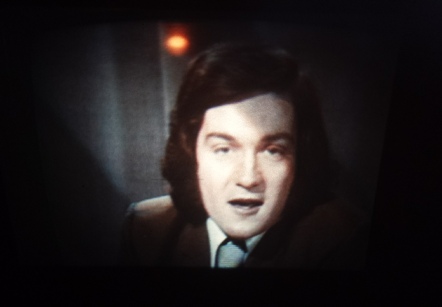
Let’s look at the evidence. On the left is a test photo of a nice pot plant. Bottom right is the handsome TV presenter with a hair style and choice of clothes typical of the era, and top right what is now called a station ident. Both the images on the right carry a clear reflection of the room’s light, and this is also reflected on the edge of the TV screen in the ident image. Figure 5.4.14 shows a selection of Apollo images of from this collection, and also one beautiful shot of Earth captured from TV and shared by Retro Space Images via Facebook.
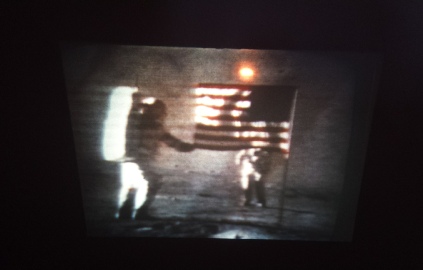
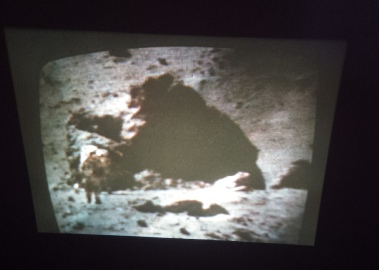
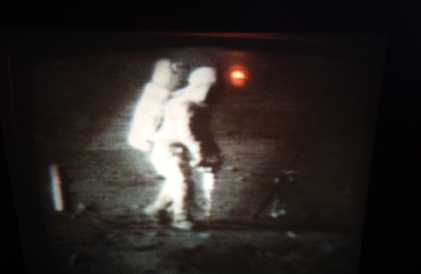
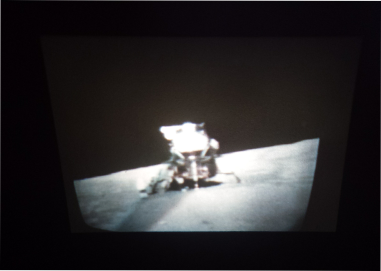
Well OK so what? It’s on TV, so therefore it’s real?
Yes it was real, but that’s not what we’re arguing here. We’re pointing out that these are not some badly converted youtube videos of ‘found footage’ only just made available. People like me watched these missions live on TV at the time, not 40 years later on the internet. The TV footage was there for people to see and pass judgement on, not secreted away somewhere waiting for a Freedom of Information request. As we’ve already shown, that TV evidence contains material that could not have been made up.
But wait, there’s more. On top of all the press reports and magazines making very public use of Apollo media, and all the films and TV that used them, there also the official NASA reports. Contrary to what your average hoaxie would have you believe the photographs and reports were publicly available to anyone who was prepared to pay for them. Here, for example (figure 5.4.16) is a copy of the Apollo 17 Preliminary Science Report, published in 1973 complete with colour images of the Earth’s weather, amongst other things. There’s that Blue Marble again!
Figure 5.4.16: Apollo 17 Preliminary Science report
That isn’t just any old Apollo 17 PSR. That’s my personal copy that I bought off eBay for £17. It’s not on a NASA archive, it’s not electronic, it’s actual paper with actual unalterable colour photographs in it.
As well as these public releases of Apollo material, we also have its use by what could be described as the same kind of counter-
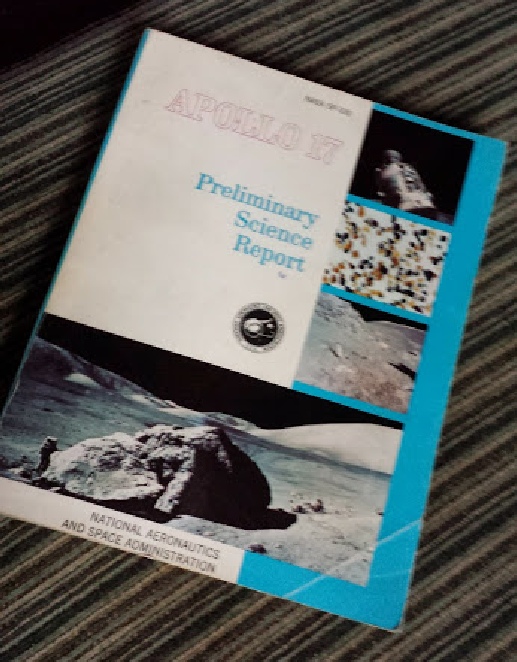
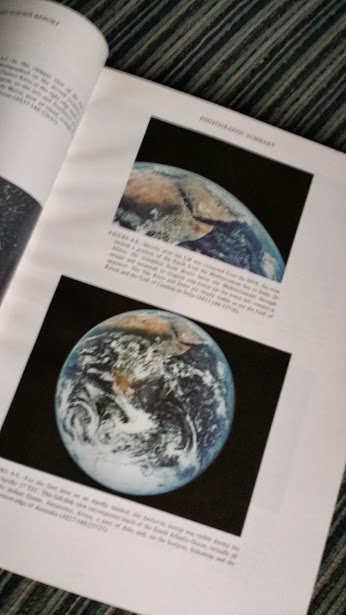
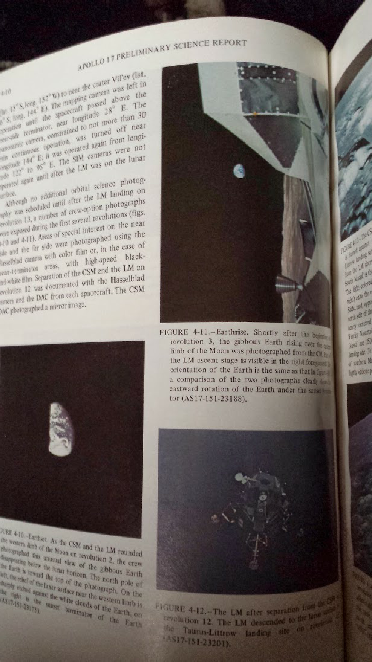
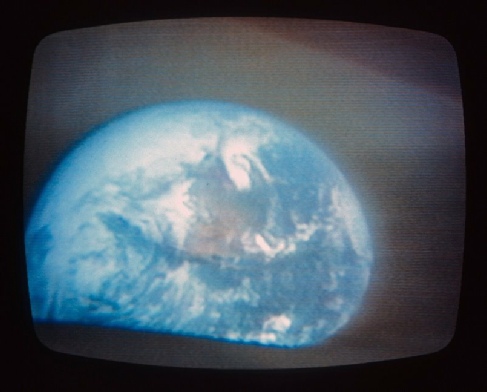
Speaking of TV, here’s a nice use of Apollo 17’s ‘Blue Marble’ shot for the live coverage of the Apollo-
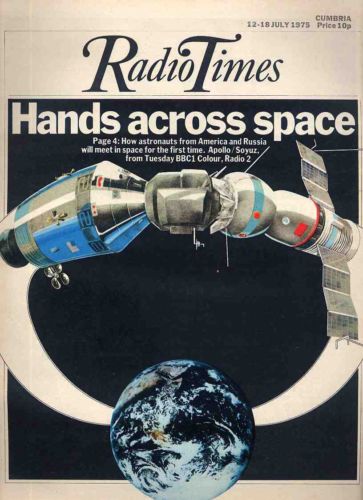
Figure 5.4.15: BBC Radio Times publication showing the forthcoming Apollo-
The view of earth they’ve used there is actually from Apollo 8, and unfortunately for them, it’s also reversed and therefore the wrong way round, and was taken from cislunar space, not lunar orbit as the photograph implies!
The National Geographic Apollo 11 special has a couple of slightly more accurate examples, using images from Apollo 8 and 10 (figure 5.4.20), although the TRW advert again has the view reversed!
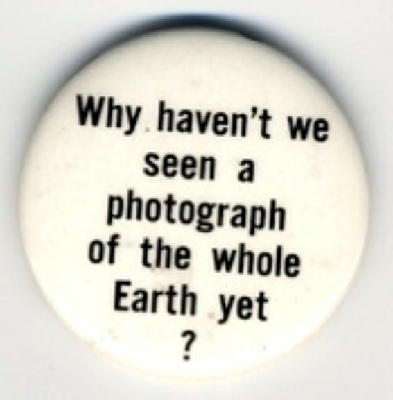
Figure 5.4.17: Badge produced by Stewart Brand.
The next stage for Brand was to produce the Whole Earth Catalog, a list of products made from sustainable materials or that would allow people and communities to live ‘off-
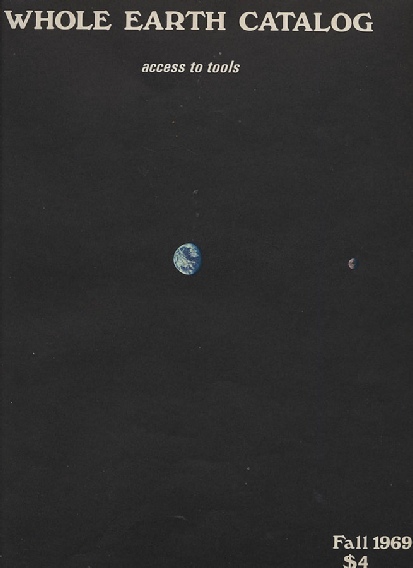
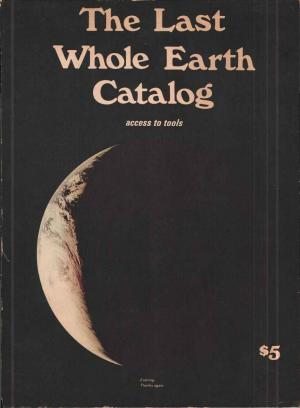
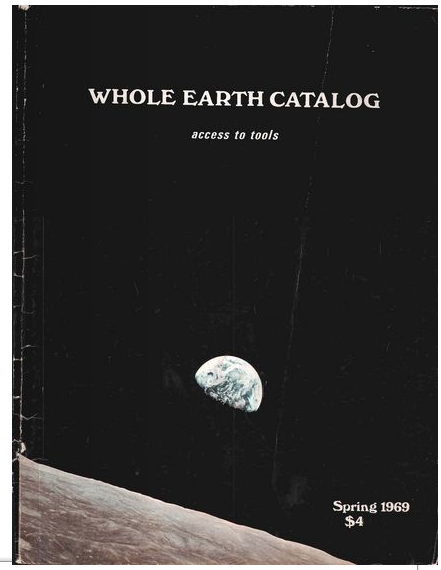
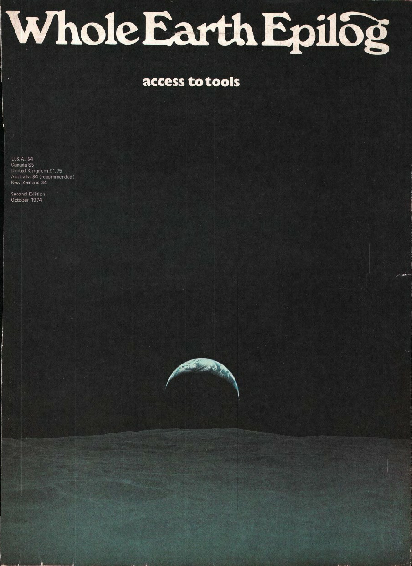
Eco-
One such company was the producers of Tang, a popular orange drink. It was famously taken into orbit on Mercury and Gemini flights to experiment with food and drink taste and behaviour in zero gravity. In 1969, Tang produced this advert (figure 5.4.19) to cash in on Apollo 11’s success.
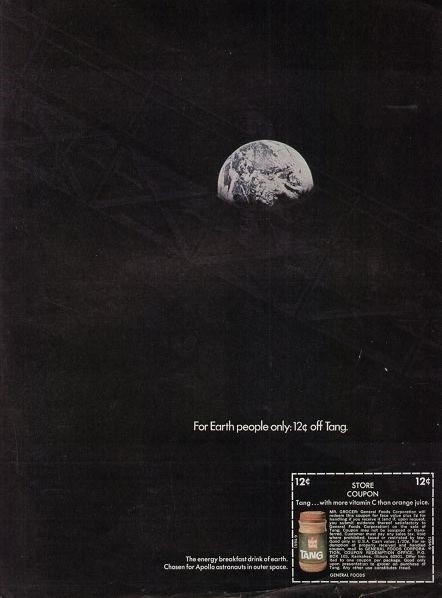
Figure 5.4.25: Sections of AS11-
The above are from my personal collection. There are many other examples from all over the world freely available to buy on the web. Likewise the many Viewmaster reels that were made to give a pseudo 3-
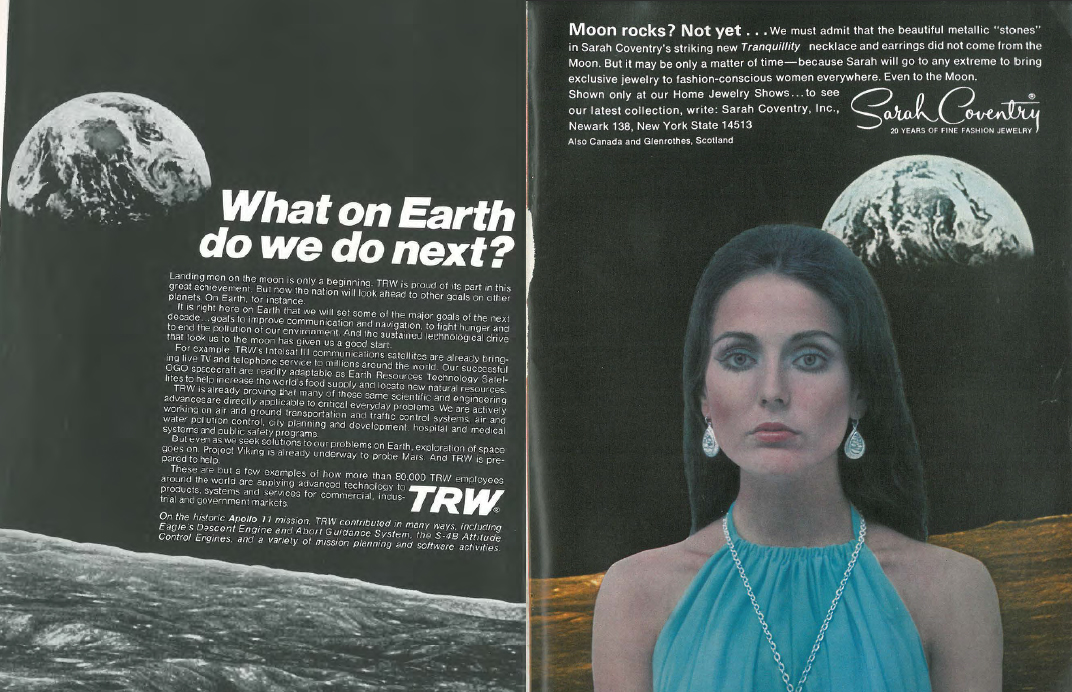
Naturally Hasselblad were proud of their role in the missions, and this 1973 advertisement uses the ‘Blue Marble’ to good effect, and they’d even send you a copy of it for $1. They also used the image of Hurricane Bernice from Apollo 11 (figure 5.4.21).
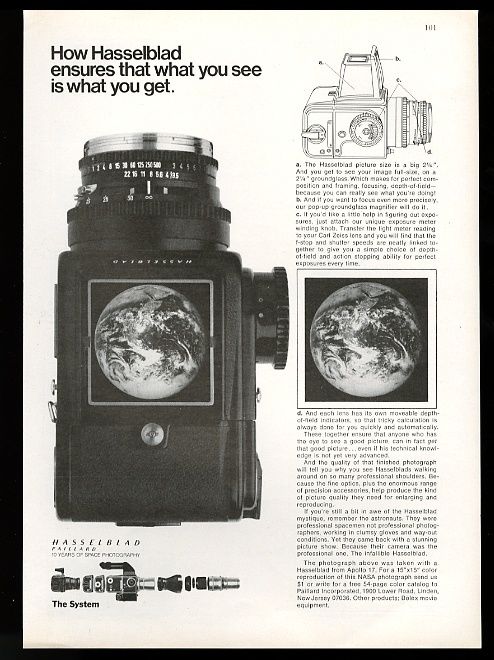
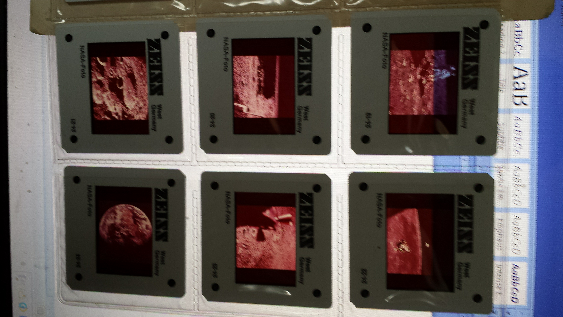
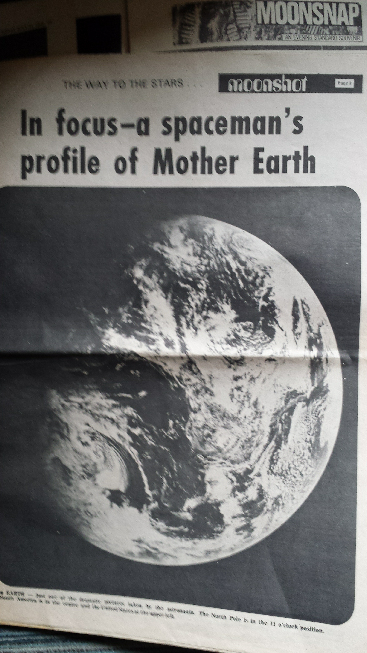
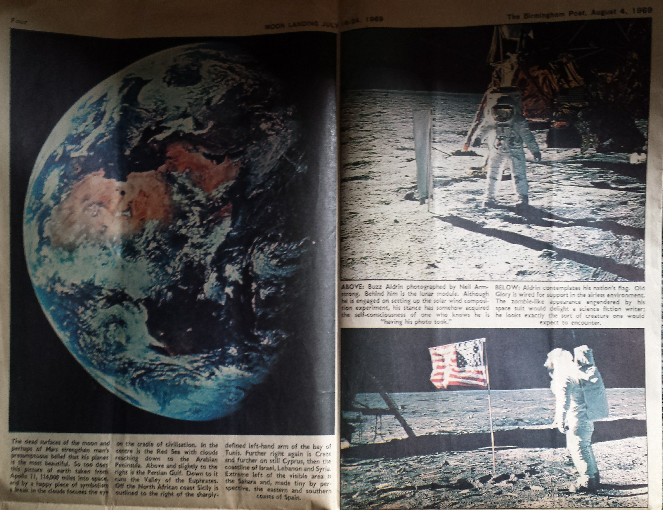
So while a vocal minority in today’s ‘we reject everything and everything it stands for whatever it is’ counter-
Apollo images were also popular in philately circles, with first day covers and commemorative issues regularly featuring Apollo images.
Here. For example, is one from 1979 that shows an obviously fictional scene, but where the image of Earth used might look familiar when it’s rotated the right way up.
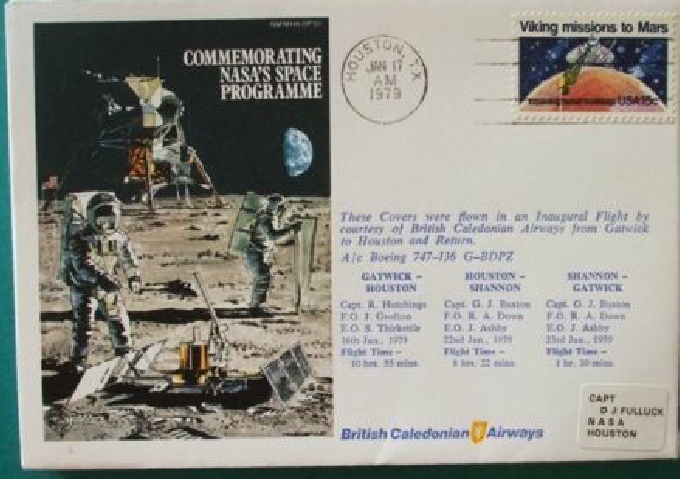
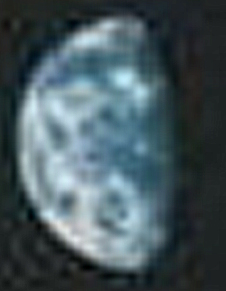
That’s right, it’s the famous Apollo 8 Earthrise shot. This scene from a 1971 cover dedicated to Apollo 15 is also loosely based on it:
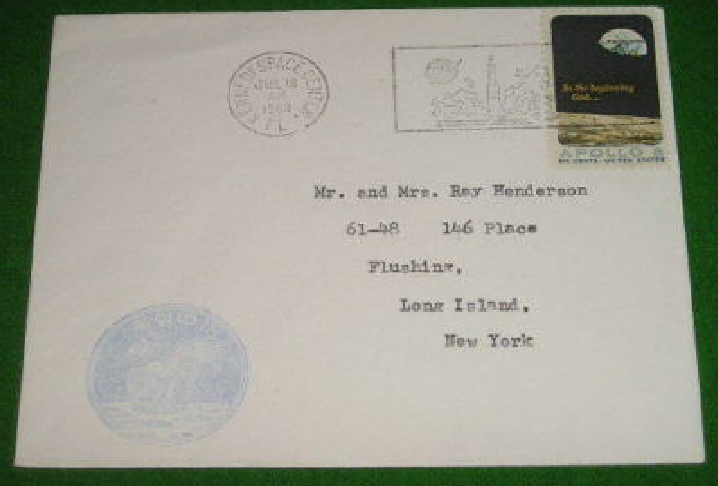
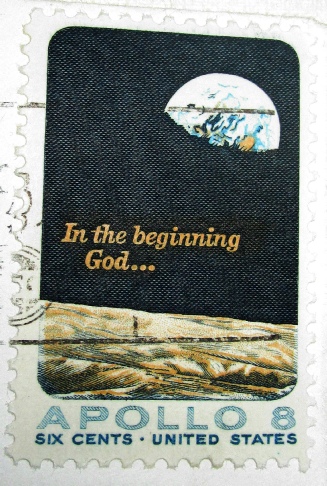
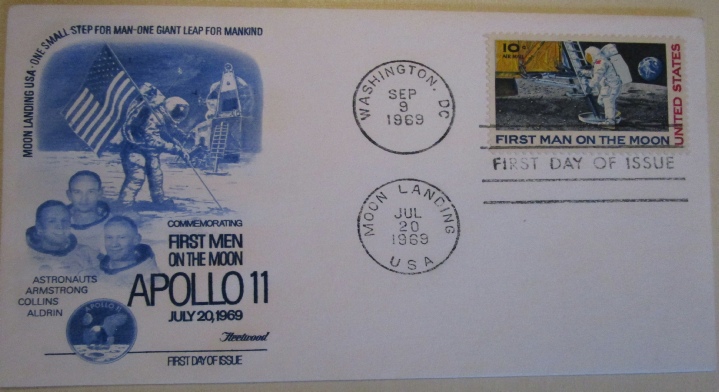
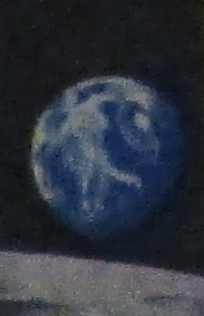
Figure 5.4.27: Evening standard dated 25/7/69 (left), zoom of the view of Earth (centre) and AS08-
An interesting point here is that the Evening Standard souvenir edition was published about a week before any actual images from Apollo 11 were released, so their shots of the moon were all taken from Apollo 10, and other shots were those from live TV broadcasts or official pre-
Apollo images continue to be used in popular media, and a good example is shown in figure 5.4.28 This shows the cover of a book published in 1981, just 12 years after the photograph was taken by Apollo 11 and still a long time before Photoshop. The book is by well know space artist and author Luděk Pešek, although the cover was actually done by Jane R. Wattenberg.
The actual Earthrise image also features on the stamp for this first day cover from 1969 commemorating Apollo 11, while anther Apollo 8 image (AS08-
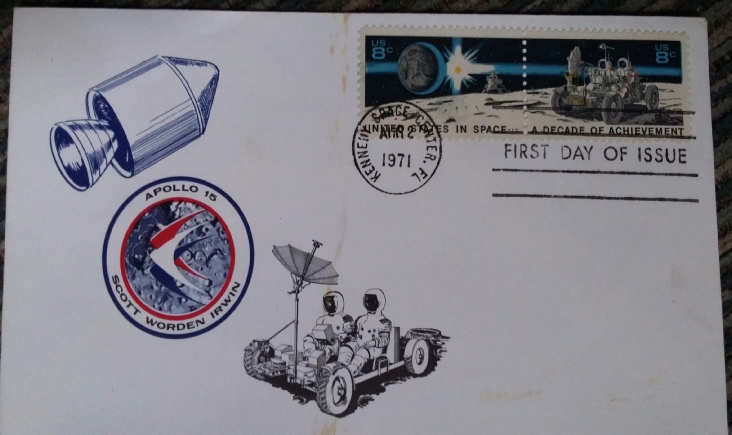
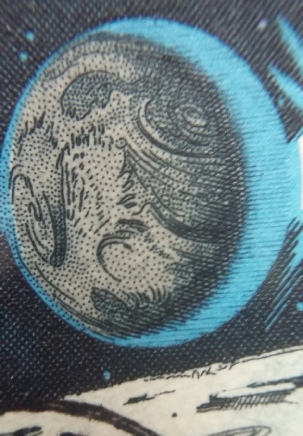
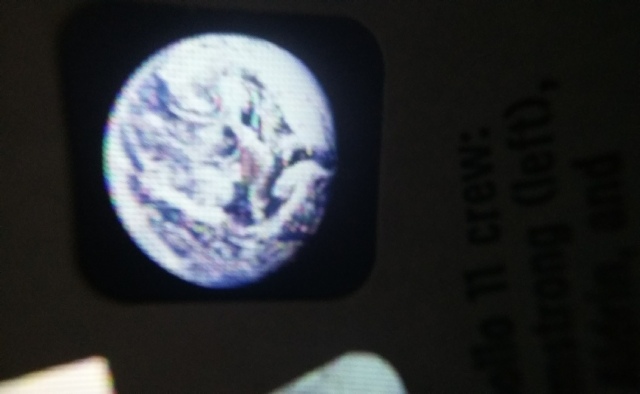
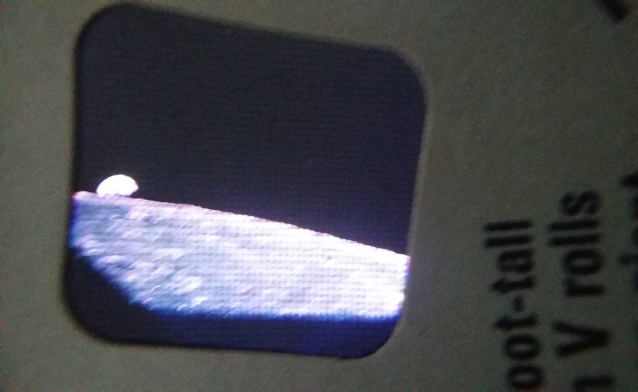
The three examples in figure 5.4.25 are form a series depicting the entire mission, and I’ve picked them because they feature mission images -
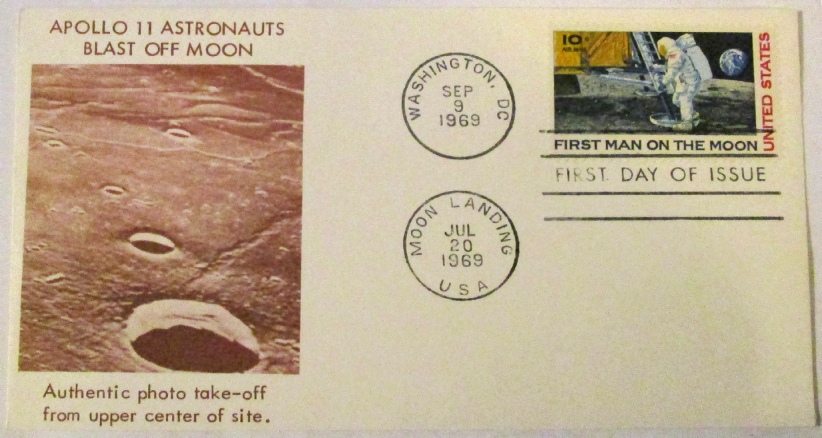
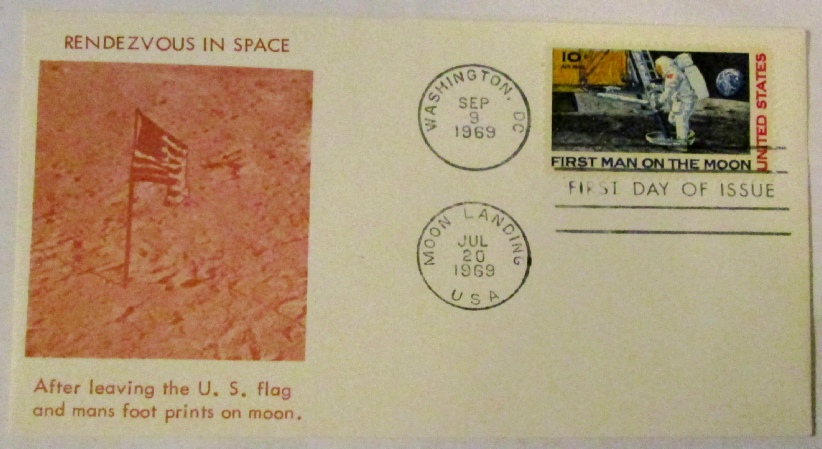
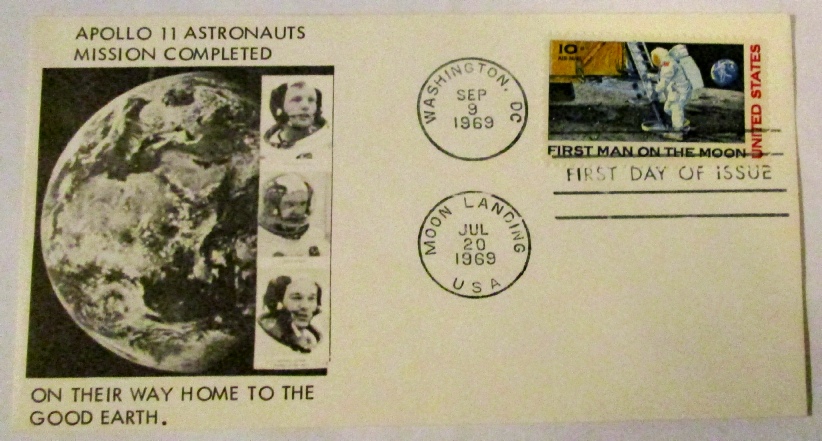
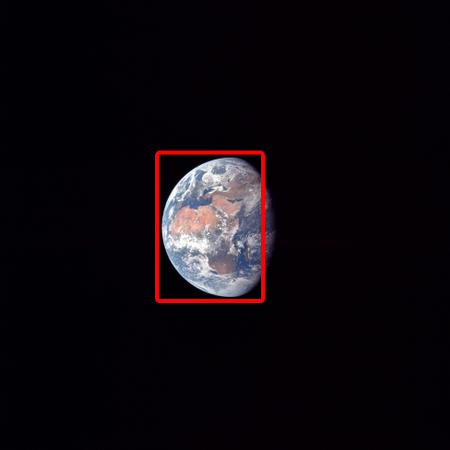
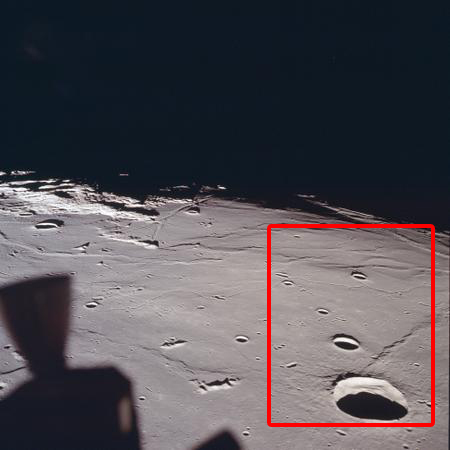
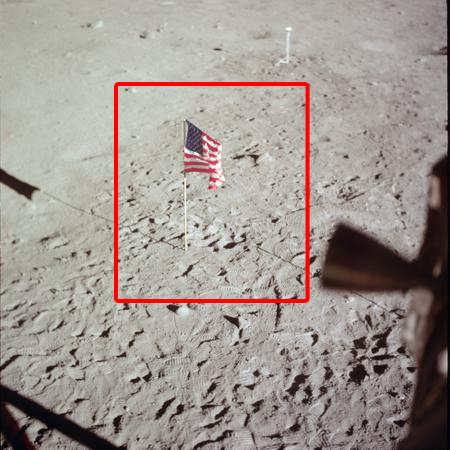
Figure 5.4.26: Viewmaster shots of Earth from my personal collection.
Sometimes Apollo imagery could get used in conceptual art used to promote the missions. In my own July 25th souvenir edition of the ‘Evening Standard’ we have the front page illustration shown in figure 5.4.27. Close examination of that image shows that the view of Earth is actually drawn from the same Apollo 8 photo illustrated earlier in this section
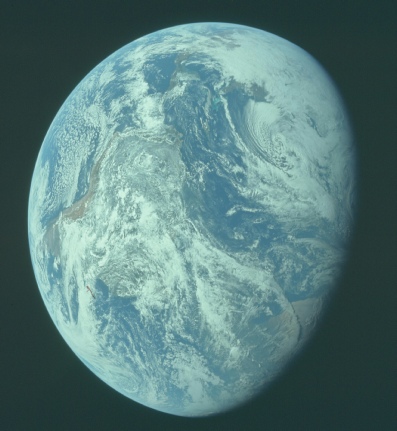
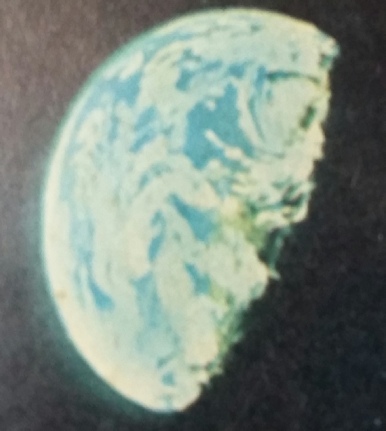
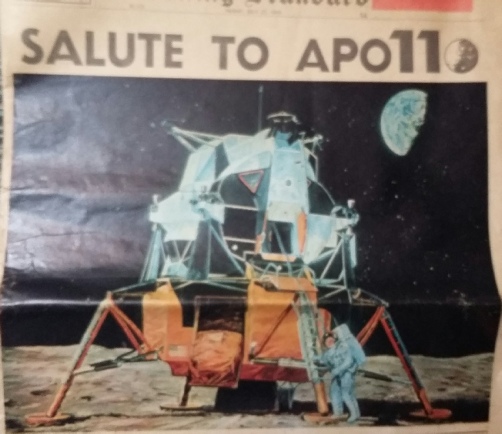
If the photograph looks familiar you may have spotted it here, as it’s one of the ones showing Hurricane Bernice. Bernice is the storm photographed and broadcast on live TV, published on the front page of newspapers and generally proving that Apollo 11 was exactly where they said it was: on the way to the moon.
Another Apollo image, AS11-
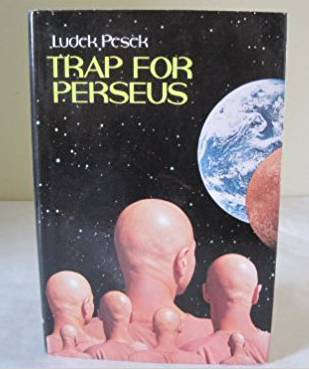
Figure 5.4.28: ‘Trap for Perseus’ cover, featuring part of an Apollo 11 photograph showing Hurricane Bernice.
Figure 5.4.29: A11-
Returning to adverts, another one that turned up in a Space Group was for Benson & Hedges 100s that came out in 1973 (figure 5.4.30).
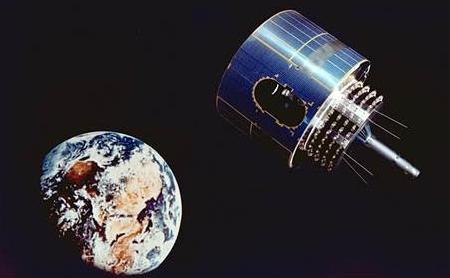

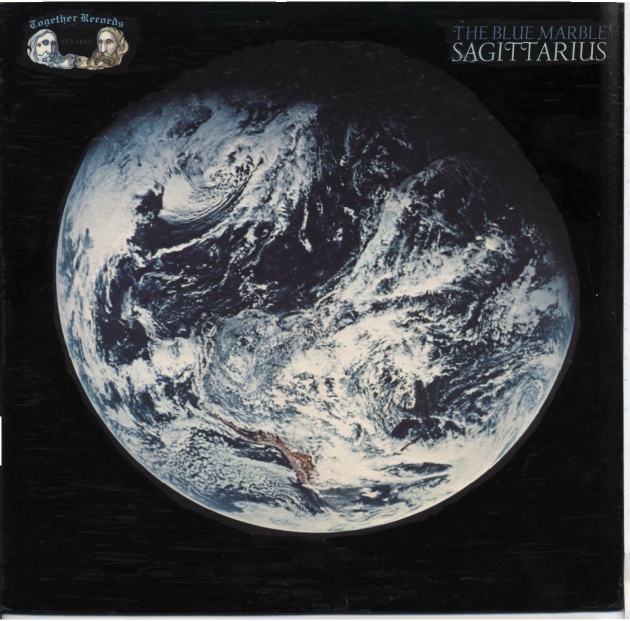
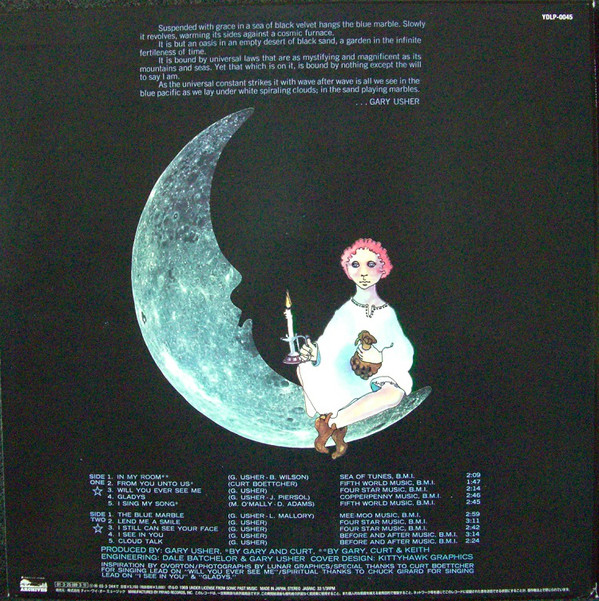
As can be seen above, the Earth in the background is very obviously derived from the Apollo 15 image taken in 1971 (discussed on this page).
The photo has another appearance in popular culture. In 1973 little known crooner by the name of Elvis Presley was involved in an ambitious live event that broadcast a concert from Hawaii to 36 countries around the Pacific by satellite -
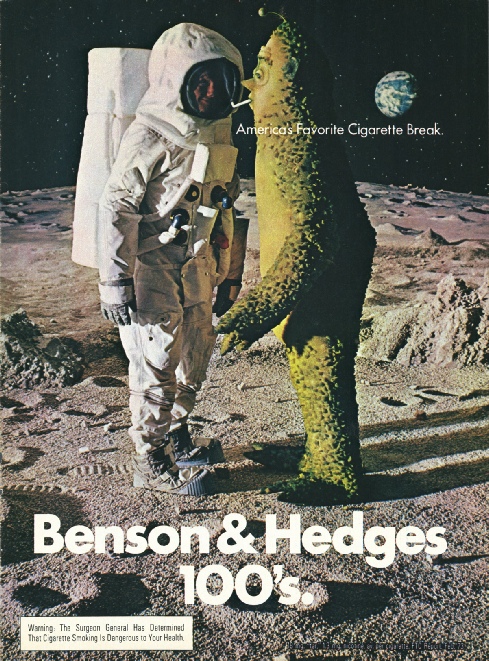
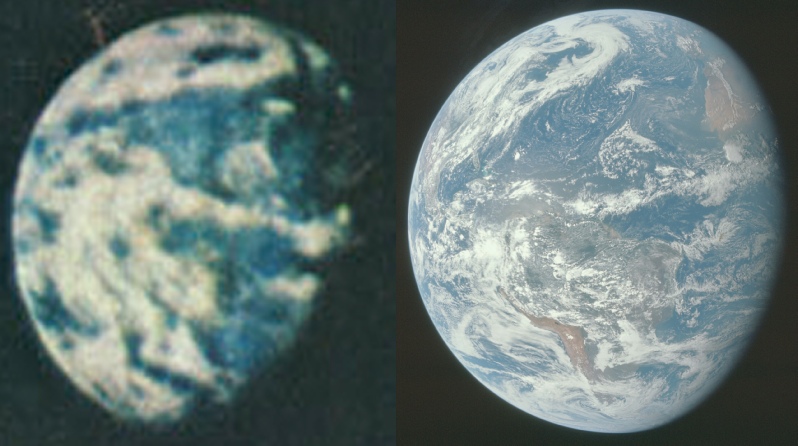
Figure 5.4.30: 1973 Benson & Hedges advertisement compared with Earth as seen in AS15-
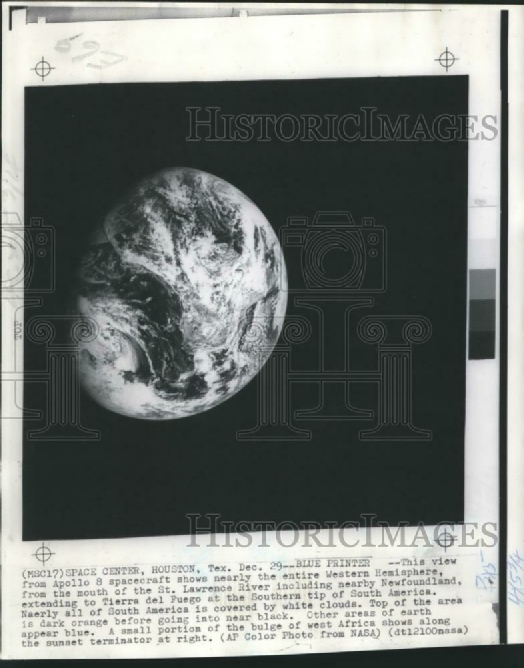
Figure 5.4.7: AS08-
The Sunday Times also had several magazine issues devoted to Apollo photographs when they were published, and I now have copies of these along with many newspapers: in short, the photos were out there long before some computer nerds worked out how to get them on a screen, and no-
In addition to newspapers, many enterprising people also photographed their TVs in memory of these achievements. A recent eBay purchase of mine included a substantial number of slides taken during the Apollo 16 mission.
Can we be sure they are genuine? Well, there’s the shape of the TV screen for a start, quite obviously of the cathode ray curved variety rather than the modern square screen. The slide cases are obviously home made in blank cases, and are clearly taken of a TV screen in someone’s house. The various clues are shown in figure 5.4.13.
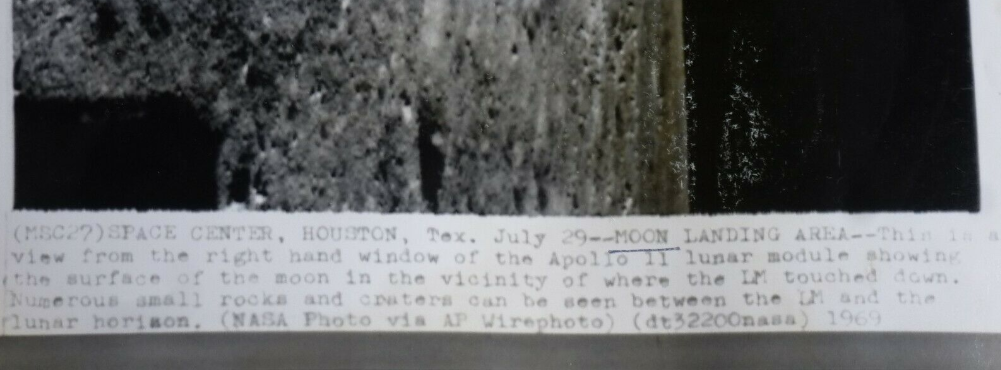
Figure 5.4.37: Row 1 -
Row 2 -
To sum it all up, all the Apollo media were available during and after Apollo, often long before any kind of software existed to create them, and certainly long before nutcases started claiming they were all faked (particularly the Dunning-
The Apollo missions were played out in newspapers, magazines, books, TV, you name it the media were all over it, sometimes using well known images, sometimes more obscure ones.
Publishers Apogee were printing the entire mission reports for each mission from 1999 onwards, complete with CDs full of all the images, and occasionally EVA footage. You can go buy them if you want, no-
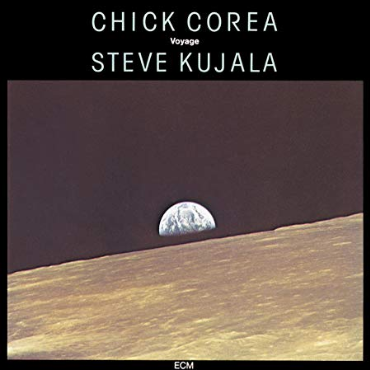
Figure 5.4.33: AS10-
The Daily Mirror was even quicker off the mark for Apollo 10 -
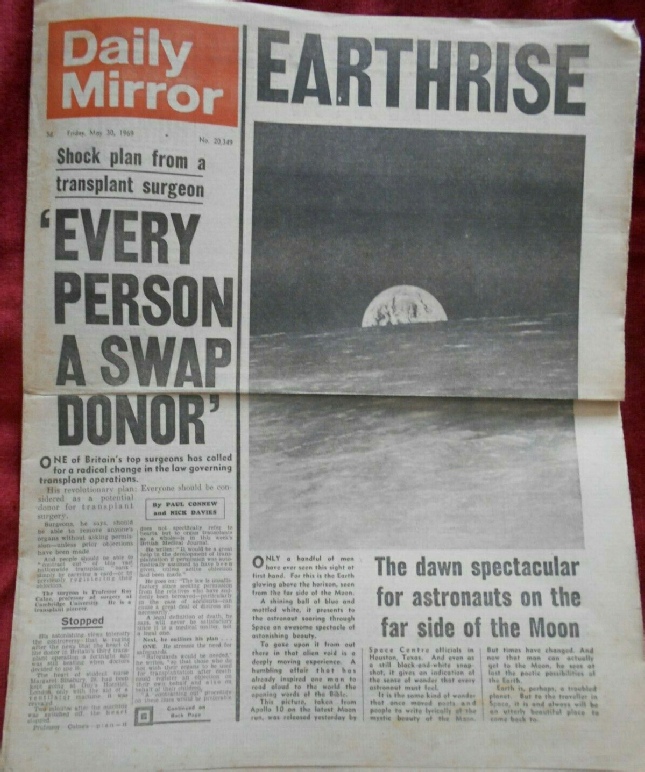
Figure 5.4.12: Daily Mirror dated 30/05/69
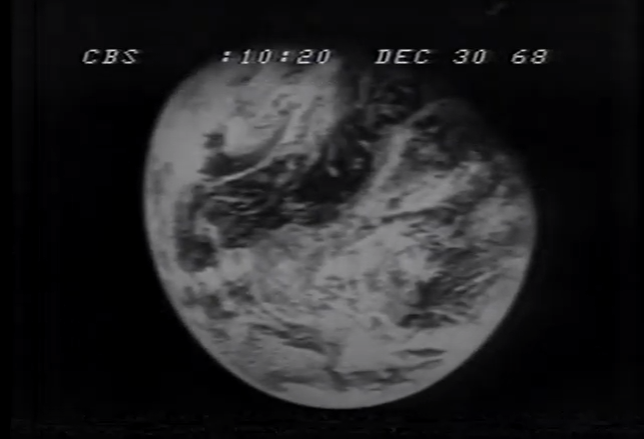
The same photo also made the poster of the 1974 scifi film “Invasion of inner earth”, though alternative versions of the poster feature A11-
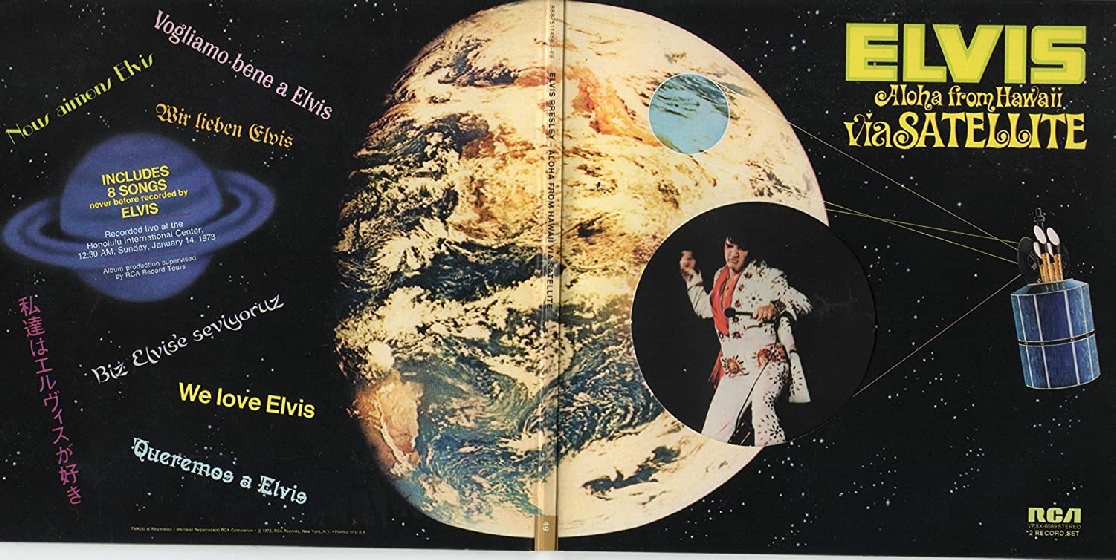

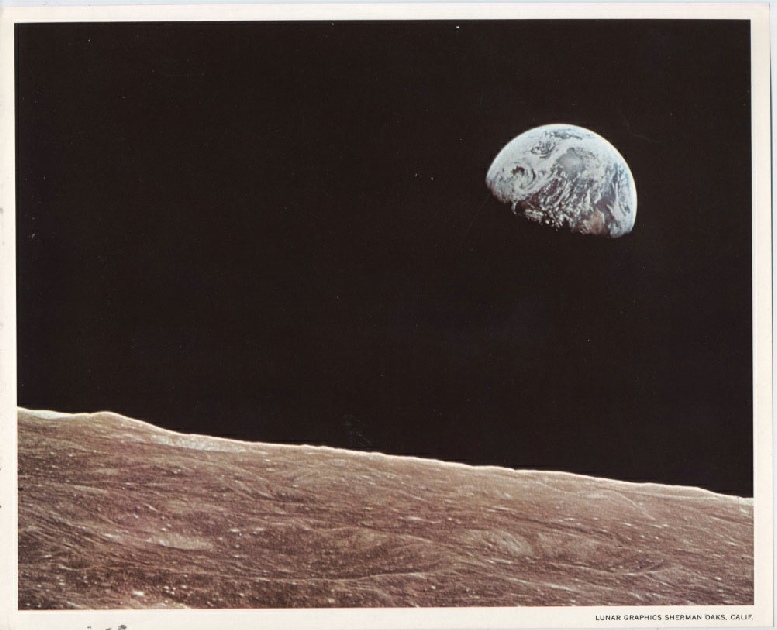
Figure 5.4.8: Cover of the 1969 album ‘Blue Marble’, with Earthrise image included as the artwork, and the quote from the sleeve.
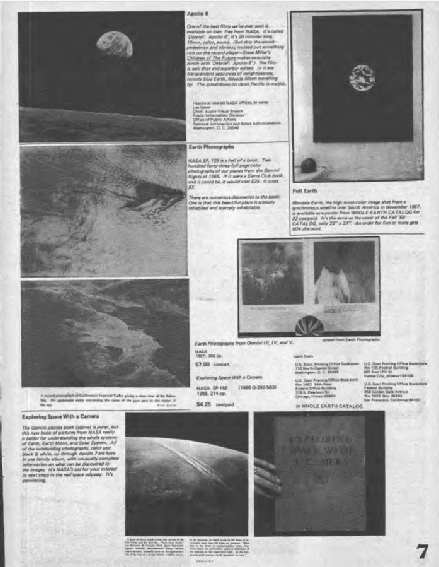
Figure 5.4.18: Whole Earth Catalog covers featuring AS08-
This Life magazine special, complete with many images of Earth, was published in January 10th 1969. This edition of Life covering Apollo 10 was published on June 6th 1969, 10 days after landing, and Apollo 11’s on August 8th. The cover image for Apollo 11’s Life magazine special was all over US newspapers on July 30th, meaning that photographs from the mission were in the hands of the media just 5 days after landing back on Earth -
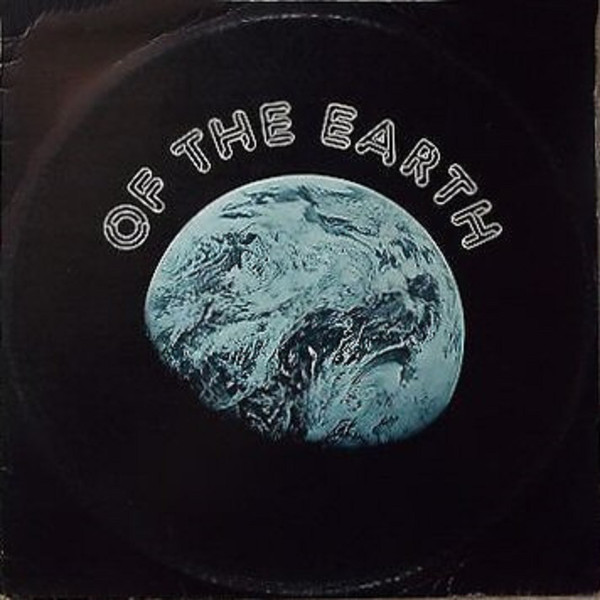
Figure 5.4.9: “Of the Earth” album cover from 1977. Source.
Figure 5.4.19: Tang advert from 1969 (sourced from eBay)
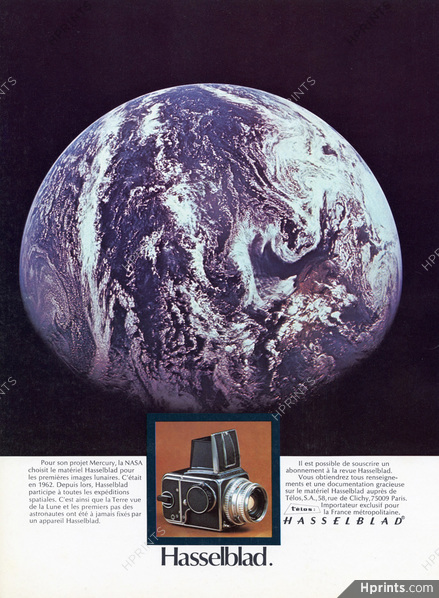
Staying with music, Chick Corea opted for a nice Apollo 10 Earthrise to illustrate his 1984 album ‘Voyage’ (figure 5.4.33).

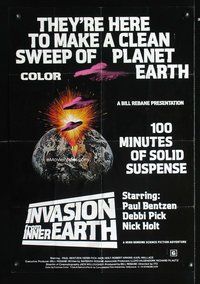
The same Apollo 10 Earthrise sequence, this term reversed, also appears on Mark Murphy’s easy listening opus “This must be Earth” (figure 5.4.34.
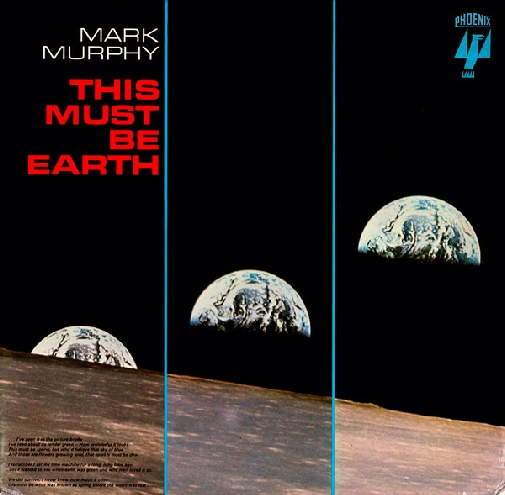
Figure 5.4.34: Apollo 10 Earthrise sequence on Mark Murphy’s “This must be Earth”.
We can also find other examples of album covers featuring a variety of Apollo missions (figure 5.4.35)
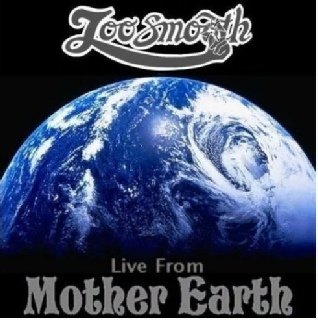
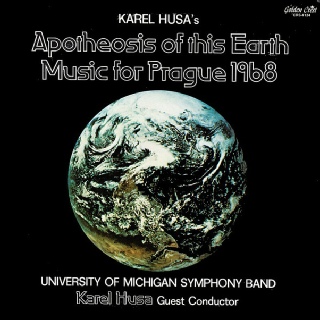
Figure 5.4.35: Row 1 -
Row 2 -
Row 3 -
Row 4 -
Row 5 -
Row 6 -
Row 7 -
Nice to see one of the more obscure Apollo 11 images being used there instead of just the more famous ones.
Returning to Apollo 10 for a moment, we have in figure 5.4.31 three examples of AS10-
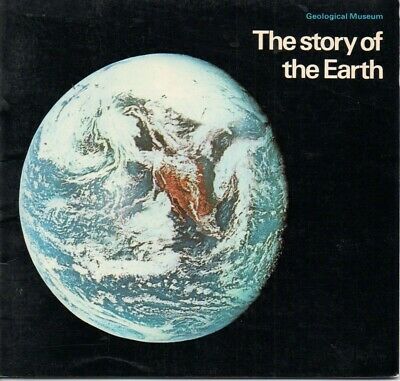
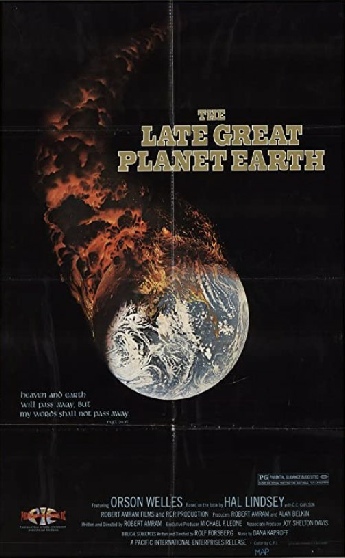
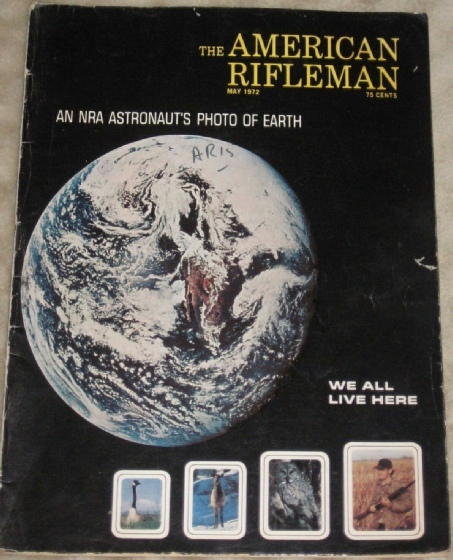
Figure 5.4.36: AS10-
And finally, we have the original Earthrise image from Apollo 8, Apollo 11’s view of Africa and Blue Marble from Apollo 17 used on book covers (figure 5.4.37).
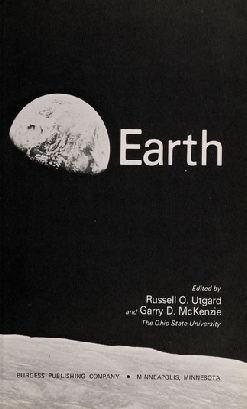
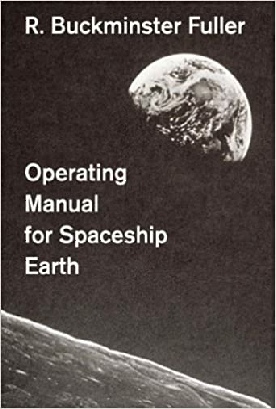
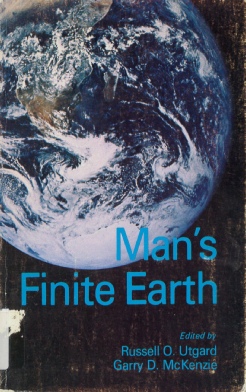
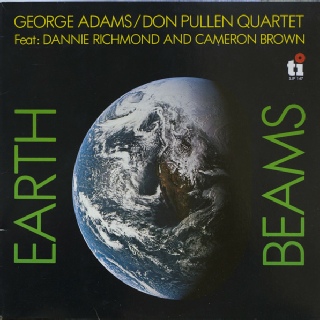
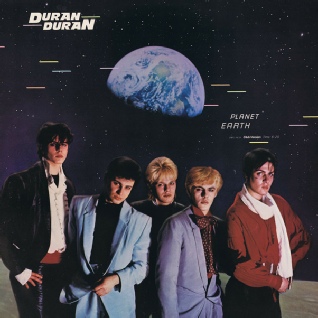
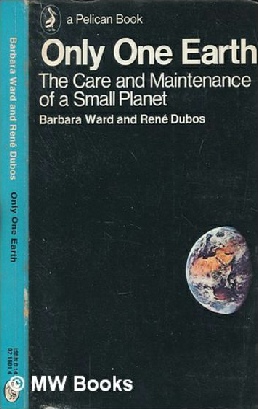
Feel free to browse my ephemera page for examples of contemporary Apollo media in my collection.
There is just no way that someone could present a different version of those images and get away with it, or magically introduce new images without it being spotted. It’s even obvious when the originals have been modified for artistic reasons. The photos have always been public domain, and were always taken on the way to, in orbit around, on the surface, or on the way home from the Moon.
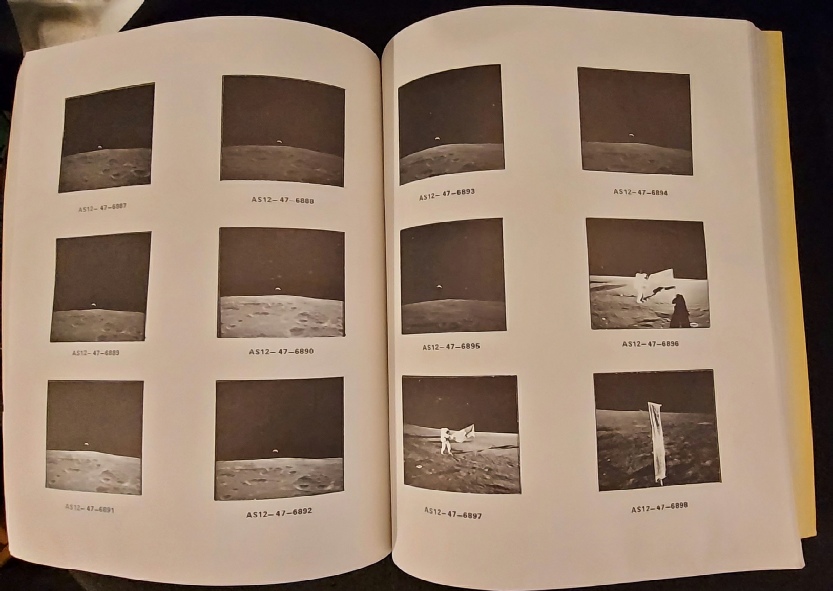
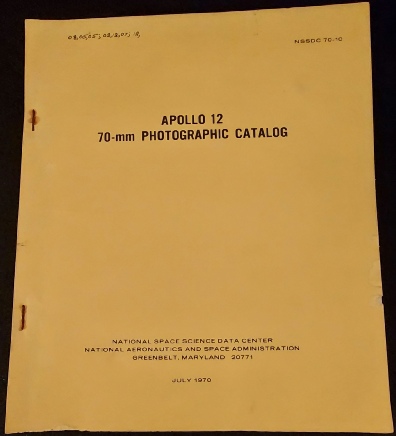
Figure 5.4.38: Personal copies of the Apollo 8 and 10 Analyses of Photography and Visual Observations, and Apollo 12 70mm photographic catalog
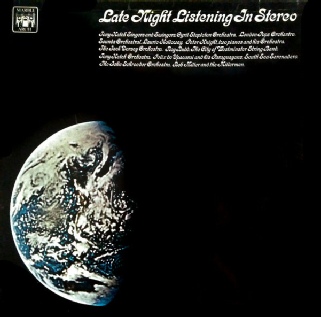
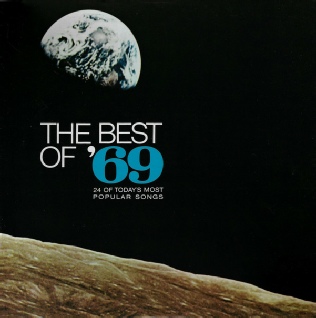
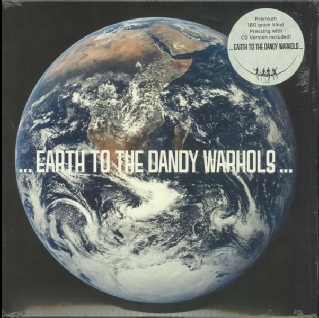
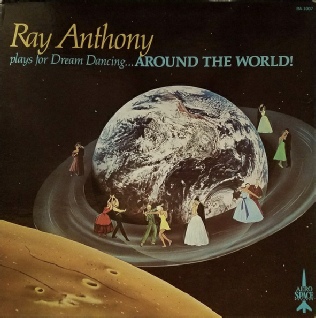
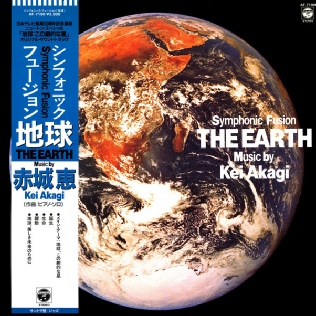
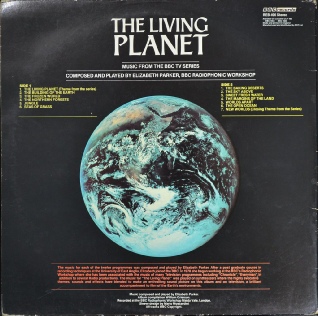
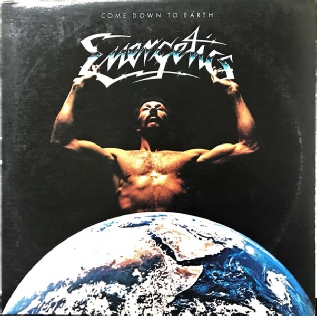
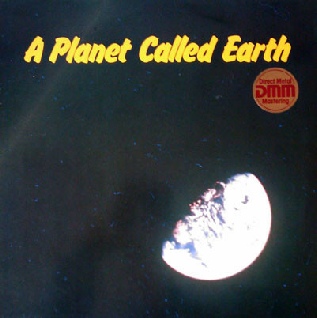
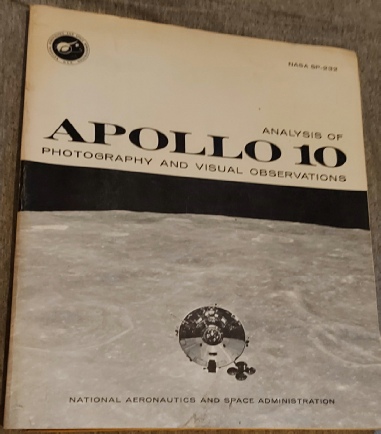
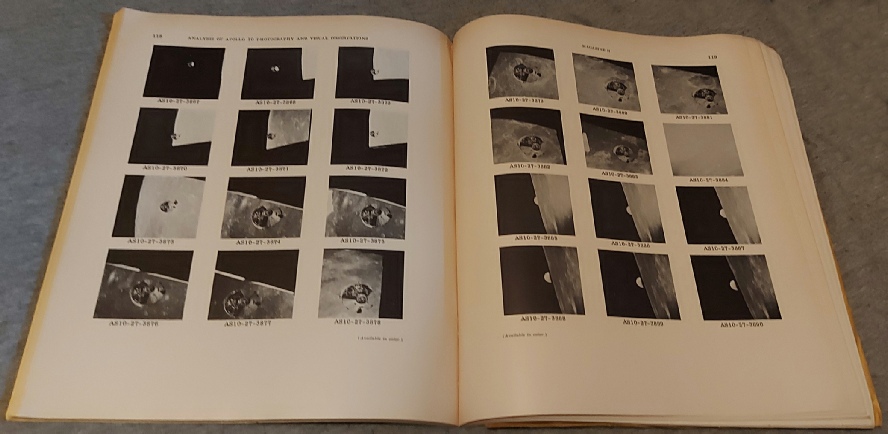
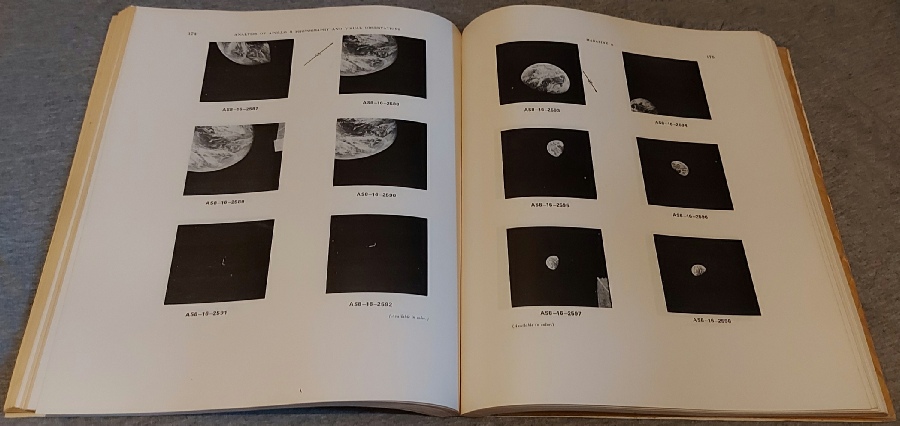
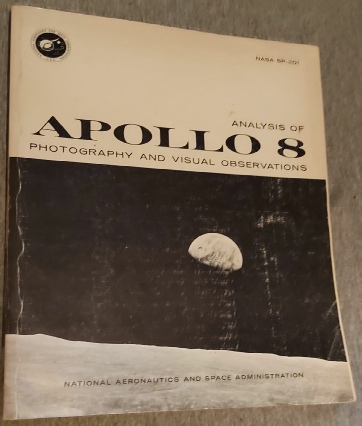
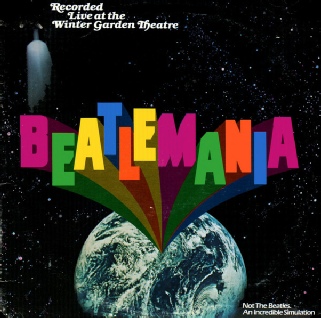
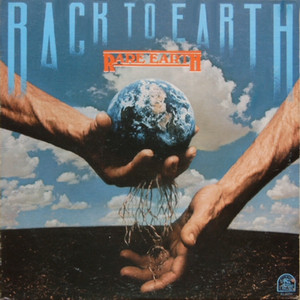
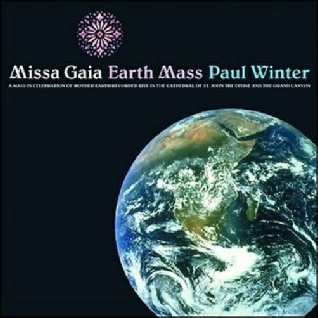
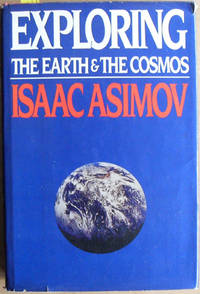
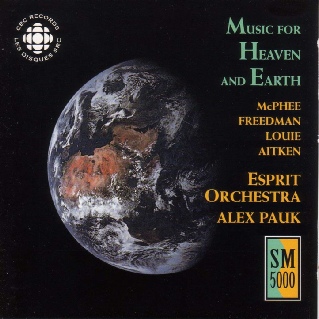
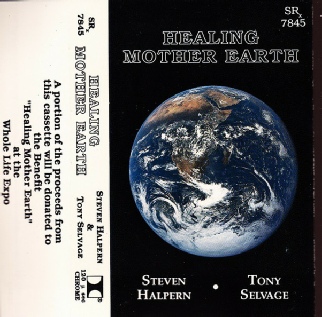


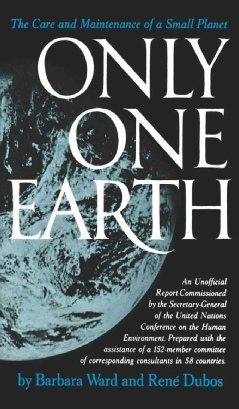
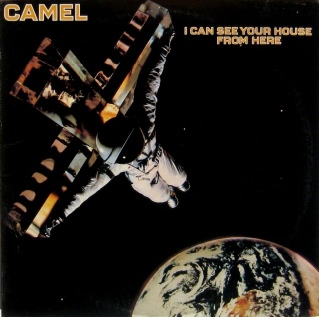
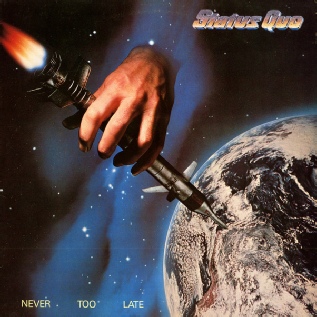
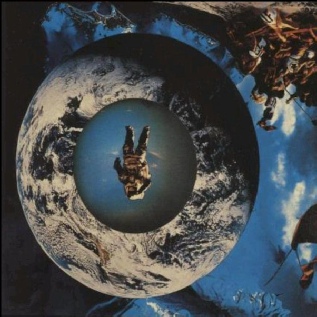
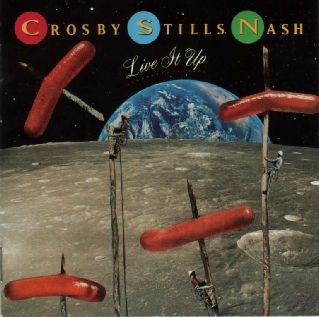
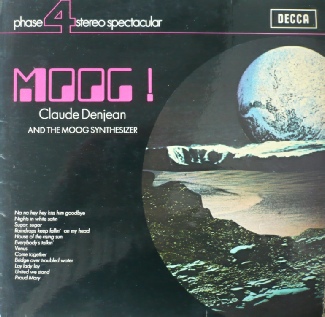
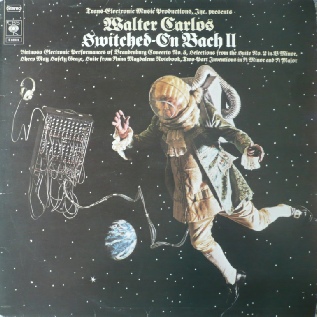
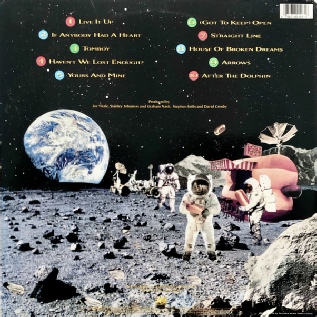
Figure 5.4.6: Photographs being printed in the Apollo Lunar Materials Receiving Laboratory. Source.
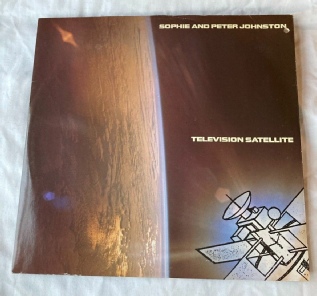
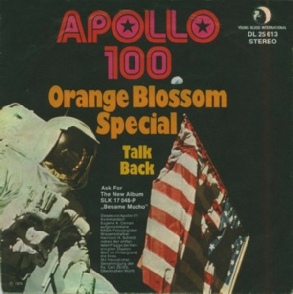
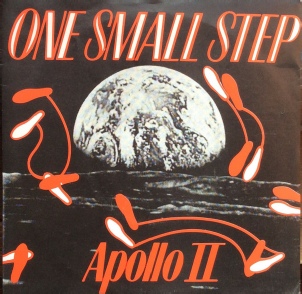
Figure 5.4.10: Selected pages of UK newspapers from my own collection published 31/07/69, all showing AS11-
Figure 5.4.11: Description of Apollo 11 image giving the date.
Figure 5.4.13: Selected images from slides bought from eBay of the Apollo 16 mission.
Figure 5.4.14: Photographs taken of the TV during Apollo 16.
Figure 5.4.20: Adverts in National Geographic Apollo 11 Special featuring Earthrise views from Apollo 8 (left) and 10 (right).
Figure 5.4.21: 1973 Hasselblad advertisement using the Blue Marble, eBay source (left), and another 1973 one showing AS11-
Figure 5.4.22: 1979 commemorative envelope featuring AS08-
Figure 5.4.23: 1971 commemorative envelope.
Figure 5.4.24: First day covers and stamps commemorating Apollo 11 featuring Apollo 8 images
Figure 5.4.31: 1973 album release ‘Aloha from Hawaii’, featuring AS15-
Figure 5.4.32: Posters for the film “Invasion from Inner Earth”
In the text accompanying the articles above, it’s revealed that ther photos and 16mm footage were released in batches by NASA over the course of a few days.
The image below (figure 5.4.6) taken by David Royal and posted on collectspace.com, shows some of the photographs from Apollo 12 being printed. The photographs are from Magazine V and show AS12-
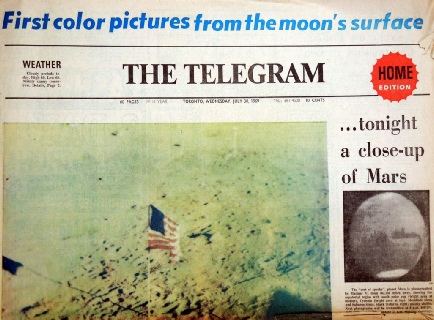
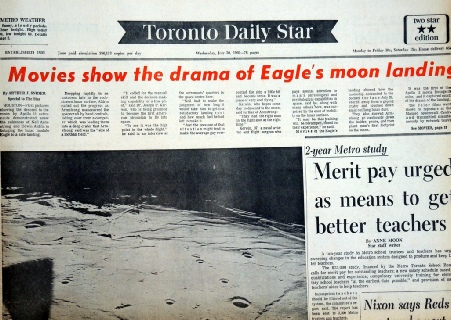
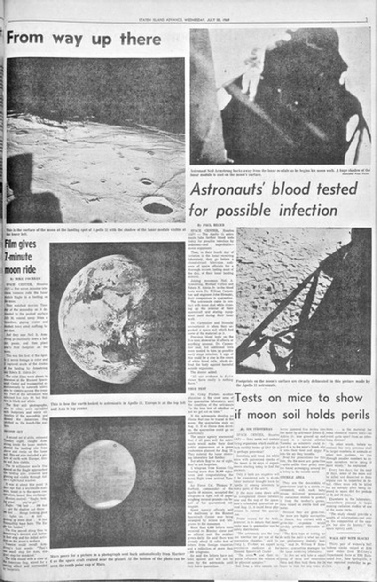
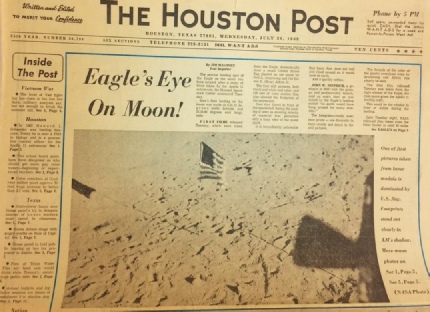
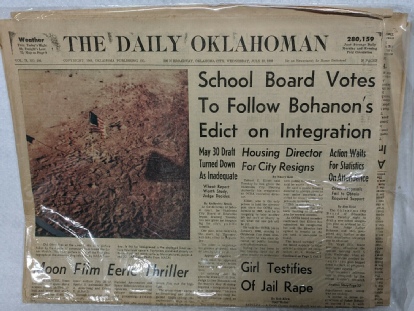
Figure 5.4.5: US newspapers featuring Apollo 11 photographs from July 30th 1969 (various online sources)
